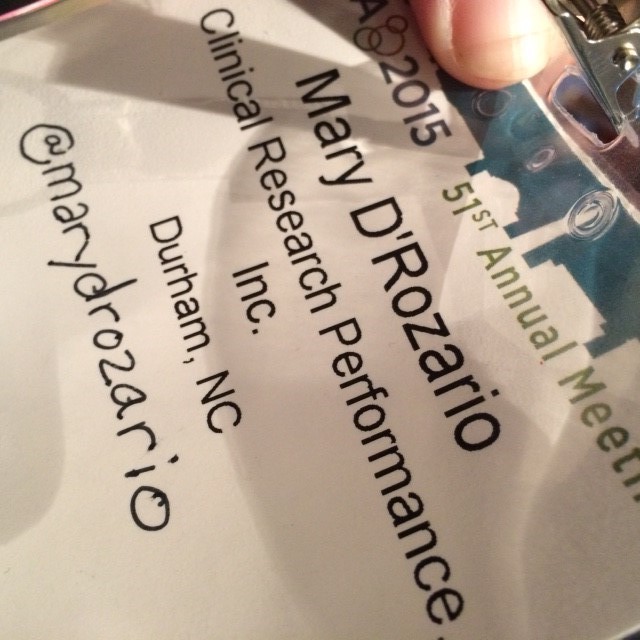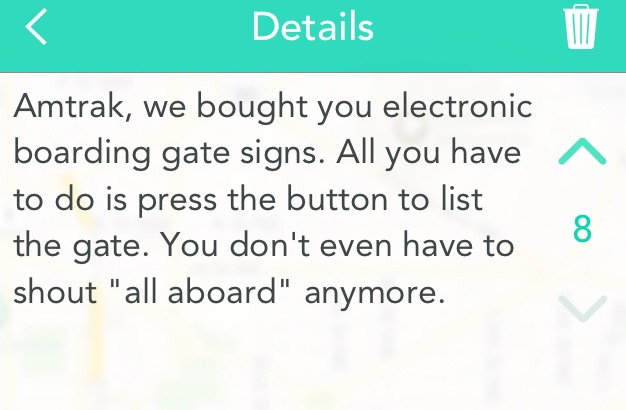Day 3 for me opened with a session on returning results to clinical trial study participants. The session was on the program because this is becoming a requirement in the EU. Here in the USA, CISCRP is On It, and their stats were quoted to kick things off:
90% of clinical trial participants want the trial results
87% not only want results but what the sponsor to continue to keep them updated at least once a year
A significant number demonstrate a better understanding of their knowledge of the drug when they are given this information
91% of the never hear a peep from the sponsor, results or otherwise
Businesses outside our industry will find this astonishing. They would do anything to get their customers to ask to engage with them. Meanwhile, our customers are asking. They are ready to give us permission to contact them. And our answer is, "Nah."
I linked to Marcus, The Sales Lion yesterday and I'm going to link to him again today.
He wasn't at this conference, but he's famous for one thing: Answer Customer Questions
Take 30 minutes and watch this awesome YouTube.
No cheating- he has great points all the way to the end.
We do have complications. Not quite as many complications as are sometimes thrown at the topic, I think, but a few are real. In the EU the notification just needs to be part of the study design that was reviewed by the Ethics Committee. But here in the USA an IRB may insist on keeping the trial open until the results are communicated. This could be years.
The biggest challenge is really a broken business culture. We don't see patients as customers. (Wait until what comes next on that.) If the customer wants to give their name to the sponsor, tell me, what regulation prevents that? We don't want their names because then we would have to treat them like customers, and pharma companies may not even have a department for that. It was very striking that this and the next session were on the medical communication and writing track. There is no customer service track.
Back to the issue at hand - CISCRP, linked above, provides assistance with notifying clinical trial participants of results. The CDC has a tool to evaluate the quality of medical communication to a lay audience at http://www.cdc.ogv/ccindex. Two of the speakers were from the Multi-Regional Clinical Trials Center at Harvard, known as the MRCT, which has developed some very actionable and specific resources for interacting with patients that they call their "toolkit". I gave you the link because you'll never find it looking for "MRCT" on Google. The "toolkit" is under "resources" and requires a log-in to access.
Okay, next: customer service (we're still on the medical communication and writing track though). These presenters were doing amazing things. Joseph Gasperino, a Field Medical Director for the Pain division in Pfizer is doing analysis of "Answering Customer Questions" with zero budget. Cheekily, they actually named the program that and, because pharma people will turn anything into an acronym that they can, they call it the "ACQ Forum."
David Meluso's title is Director, Worldwide Medical Reporting and Insights Lead at BMS. He spoke about the difference between reporting and analytics, starting with the case of the 1854 cholera outbreak in London that was solved by Dr. John Snow. History of health care as an example for today's hot topics - I am all about that! He had some very interesting things to say about "reporting" vs. "analytics." This all fits in because everyone is using analytics to try to figure out what is going on with the customer, including what questions they are asking.
"Reporting," as explained by Meluso is "describing the hay stack." It is formulaic, and as such can often be automated. It is a presentation of data.
"Analytics" is finding the needle. It is specific to the question that is asked. Now what is fascinating about this is that analytics is often presented as the end of the human and the humane, isn't it? But Meluso presented it as something that is very dependent on an analyst asking the right question and then analyzing the answer into meaning.
And then Margaret "Peg" Carrico with Eli Lilly, who has created a global voice recognition and text analytics system to answer customer questions. Her energy is just amazing and she presented a lot of great things, but here are three key business cases from the end of her presentation:
Packaging - Through their analysis they discovered that when people called in about other questions they were letting slip that when the product was being re-packed by a pharmacist it was being used past the 90 days that the product was good for. Because they have this information, they are redesigning the package to give the pharmacist more cues about the 90 day usage limit.
Travel - They have a product that has to be hand inspected at the airport because it cannot go through the x-ray machine. People forget all the time, of course, and then they call the company asking if the product is safe to use. All they could say was, "We don't know." Can you imagine being the customer? They were angry. They thought the pharma company was a bunch of dolts. All this was recorded in the system. Which gave the business case to pay for the study to answer the question.
Training - Because they have so much information about what comes into their customer service system, they were able to prove that there was no way they were going to be able to keep up with the questions that would be generated by the launch of a new product. This enabled them to get the budget to distribute training DVDs so that health care providers wouldn't flood them with questions.
The session on social media and clinical trial blinding came next. I present on blinding because there are some serious questions about the current industry attitude of reverence toward blinding in general. Social media issues rock everyone's boat, but the questions would still be there even if social media didn't exist. Eric J. Peacock, CEO of My Health Teams, approached this issue a little hard, but frankly the patient representatives went after it even harder in the Q&A. The patient representative pointed out that patients don't question blinding because they are stupid. They question it when it isn't working for them.
Peacock pointed out the evidence that had been shown that patients go to great length to deconstruct their pills and compare them to see who is getting the drug as evidence of deafness toward what the customer wants. "How could they be voting any more with their actions?" And this is not new; this is not something invented by social media. This goes back to at the AZT trials of the 1980s (discussed in a previous blog post) and even further back than that.
He showed evidence of a project where his company had successfully recruited subjects, but then they dropped off prior to enrollment because of issues about the study. At which point he delivered a pretty spot-on zinger:
"Other than the prison industry, no other industry spends so much on an individual and never ask them upfront what they want."
Followed by:
"Patients are people who act like consumers. We're finding that works very well."
Important stuff.
Lastly I went to hear what the DIA staff had to say about speaking and publishing with DIA. First off, watch for the deadline for next year's Annual Meeting. Apparently it usually opens in August and closes in September, but they are looking at pushing that back this cycle. They really made it sound a bit like applying for college: they have to read thousands of pitches, your's gets a second. So in addition to being well written and very current and relevant, really being able to match the conference theme is something that can make your entry get noticed.
The staff pointed out that they are nice people (and they do seem like very nice people!) and that if you call them and talk to them about your pitch for a conference or for a publication, they will do what they can to help you form it in a way that is most likely to be successful.
For the Global Forum they are seeking a continual stream of very current topics about China, and they also showed 11 other preferred topic areas, one of which was communications and social media. They are having some updates coming which should make both the Global Forum and TIRS more searchable.
This tidbit I thought was fascinating: They experimented for a series of four issues of TIERS with selecting one article from each issue to have a companion podcast (available here). The expectation of course would be that this would increase text article downloads somewhat. It increased downloads 30 times over!
And then it was the end of the conference day and I ran back to my room and started trying to figure out what is going to be on my podcast that I need to start immediately.
Day 2 is posted here.
This is Day 3.
Day 4 is posted here.
---
This blog post by CRP Social Media President Mary K.D. D'Rozario first published at http://www.crplink.com/blog.










